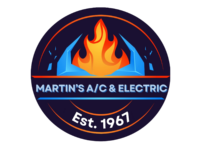Building a new residential home comes with various important decisions, and one crucial aspect is ensuring an effective heating system. A well-functioning heating system is essential for maintaining a comfortable living environment, especially during cold months. Selecting the right heating system involves careful consideration of multiple factors including the size of the home, the local climate, and energy efficiency.
Key Factors in Choosing the Right Heating System for New Residential Buildings
Selecting the right heating system is crucial for the comfort and efficiency of new residential buildings. Several factors should be considered to make an informed decision.
Firstly, the size of the home plays a significant role in determining the appropriate heating system. A larger home may require a more powerful system to ensure even heating across all areas. Conversely, a smaller space may be adequately heated with a more compact system.
Secondly, the climate of the location should be considered. Different climates demand different types of systems. For instance, in colder regions, a high-efficiency furnace might be more appropriate, whereas milder climates could benefit from a heat pump.
Energy efficiency is another important factor. High-efficiency systems not only lower energy bills but also reduce the carbon footprint. Opting for a system with a high AFUE (Annual Fuel Utilization Efficiency) rating can ensure better performance and cost savings.
Finally, it’s essential to consider the type of fuel the heating system will use. Options include natural gas, propane, oil, and electricity. The availability and cost of these fuels can influence the decision. Consulting with our professionals can help you choose the best system to meet your specific needs.
Essential Steps in the Installation of a Heating System
Installing a heating system in a new residential building requires careful planning and precision. The following steps outline the essential aspects of this process.
1. Initial Assessment: Our professionals start by assessing the home’s heating requirements. This includes evaluating the size of the home, insulation levels, and climate considerations. Proper assessment ensures the selection of an appropriately sized and efficient system.
2. Ductwork Design: Properly designed and installed ductwork is crucial for effective heating. Our technicians ensure that the ductwork is correctly sized and sealed to provide even heating distribution throughout the home. Poorly installed ductwork can lead to heat loss and inefficiency.
3. System Installation: Once the appropriate system is selected and ductwork designed, the installation process begins. Our technicians place the heating system in a location that allows for proper ventilation and easy maintenance access. This step includes securely connecting all components and ensuring they function correctly.
4. Testing and Calibration: Before finalizing the installation, thorough testing and calibration are performed. This step ensures that the system operates efficiently and meets the home’s heating needs. Our professionals check for any potential issues, such as leaks or improper airflow, and make necessary adjustments.
5. Final Inspection: The last step involves a comprehensive inspection to verify that the installation adheres to all safety and performance standards. Our technicians ensure that everything is in working order and provide guidance on operating and maintaining the system.
Following these essential steps helps ensure a successful and efficient heating system installation, providing comfort and reliability for the home.
Common Heating Problems in New Builds and How Our Technicians Resolve Them
Even in new construction homes, heating systems can encounter issues that require professional attention. One common problem is uneven heating. This occurs when certain rooms are warmer or cooler than others, often due to improper ductwork installation or furnace placement. Our technicians meticulously inspect and adjust the ductwork and furnace location to ensure even heat distribution.
Another frequent issue is poor furnace performance. A furnace might struggle to maintain comfortable temperatures due to incorrect sizing or installation errors. Our professionals assess the furnace size and installation quality, making any necessary adjustments to ensure the system operates efficiently and reliably.
Noisy operation is another concern many homeowners face. Unusual sounds such as rattling, banging, or whistling often indicate loose components or poorly installed ductwork. Our technicians thoroughly inspect the system, secure all parts, and correct any installation errors to provide quiet, efficient heating.
Additionally, frequent cycling on and off can be a sign of thermostat issues or improper system size. This problem not only creates discomfort but also wears down the system faster. Our professionals diagnose the root cause, recalibrate the thermostat, or recommend the right-sized system if a replacement is necessary, ensuring optimal performance.
Advantages of Regular Heating Service and Maintenance for Long-term Efficiency
Regular heating service and maintenance are essential for the long-term efficiency and reliability of your home’s heating system. One significant benefit is the extended lifespan of the furnace. Routine checks and cleaning by our professionals help prevent wear and tear, ensuring your system functions smoothly for years.
Improved energy efficiency stands as another advantage of regular maintenance. Furnaces can accumulate dust and debris over time, reducing their efficiency. Regular servicing helps keep your system clean and operating at peak performance, which lowers energy bills and contributes to a greener environment.
Consistent furnace service also minimizes the risk of unexpected breakdowns. By identifying and addressing potential issues early, our technicians can prevent costly heating repairs and inconvenient service disruptions. Homeowners enjoy peace of mind knowing their system is well-maintained and less likely to fail during cold months.
Better indoor air quality is another key benefit. A well-maintained heating system reduces the circulation of dust, allergens, and other particulates in your home. Our professionals ensure air filters and critical components are clean and functioning correctly, promoting a healthier living environment for you and your family.
Conclusion
Ensuring effective heating service in new residential buildings involves careful selection of the right heating system, precise installation, and prompt resolution of common heating issues. Regular maintenance extends the life of your furnace, improves energy efficiency, and enhances indoor air quality. Taking these steps guarantees a comfortable and efficient home environment.
At Martin’s Heating & Air Conditioning, our professionals are dedicated to providing top-notch furnace services for new residential buildings. From accurate installations to reliable maintenance, our technicians ensure your heating system performs at its best. Contact us today to schedule a heating service in Galliano and experience professional heating care for your new home.







